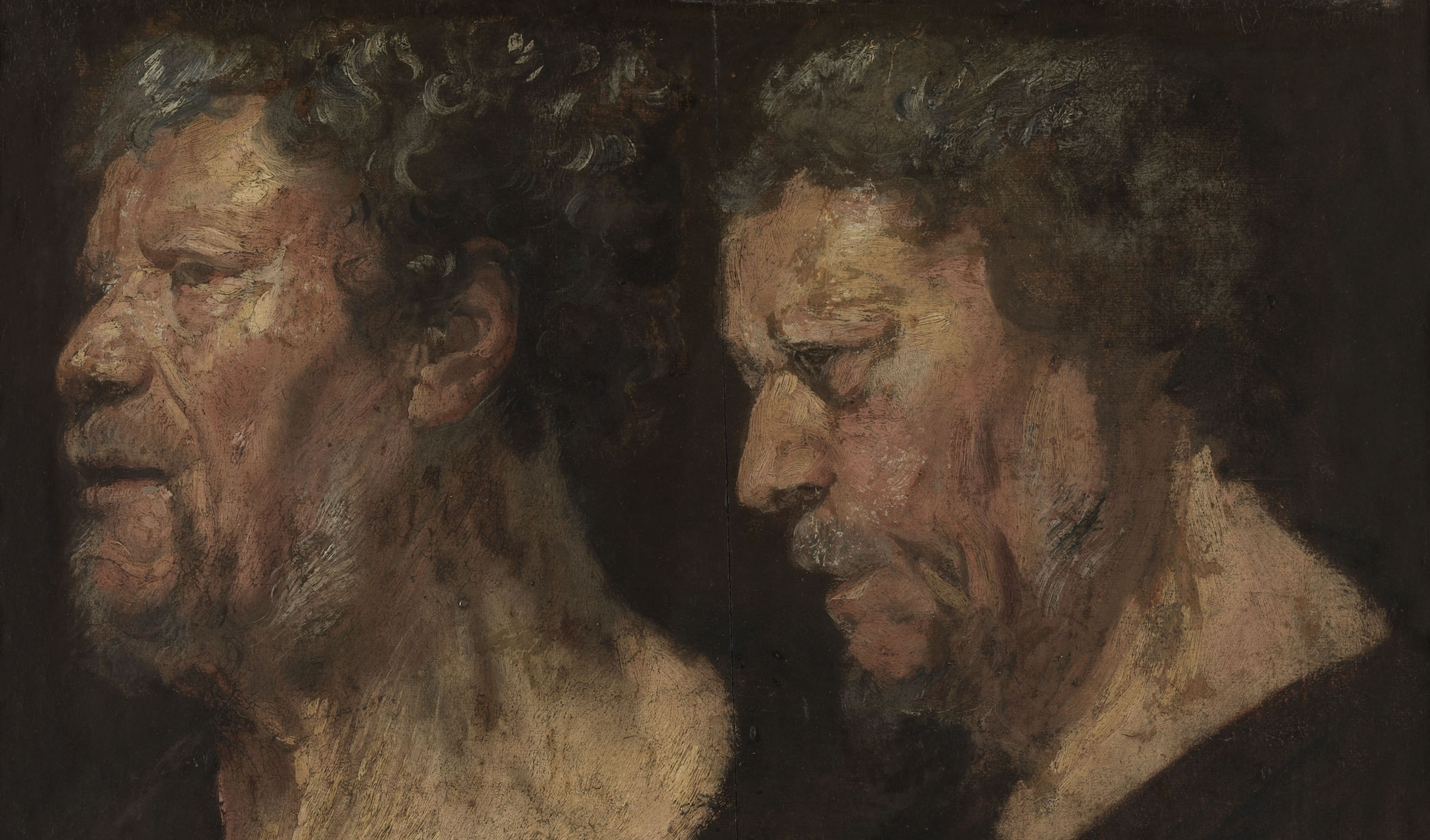Fondazione Prada, Milan
October 2018
Image: Jacob Jordaens, Studies of the Head of Abraham Grapheus, 1621 (detail).
October 18, 2018—February 25, 2019
Luc Tuymans burst on the scene in his native Belgium in the mid-1980s with cool, pragmatic paintings in unfashionably muted tones that addressed the inadequacy and "belatedness," as he has put it, of painting. Beyond wrestling with the limitations of the medium, the artist’s oblique subject matter, adopted from found imagery, film, and, more recently, his own iPhone photographs, often refers to pointed socio-political issues, especially in regard to Belgian and European national identity. Tuymans’s willingness to engage with thorny, violent passages from history—colonialism, the Holocaust, and the Iraq War, among them—has become a trademark of his work, as well as his rigorous curatorial efforts at museums.
The 2016 survey that Tuymans curated at London’s Royal Academy of Arts featuring macabre, hermetic works by fellow Belgian James Ensor (1860–1949), for instance, threw a wrench into mainstream histories of Flemish art. By contrast, The State of Things: Brussels/Beijing, an earlier exhibition Tuymans organized for the Palais des Beaux-Arts, Brussels, and the National Art Museum of China, Beijing, examined centuries of continued cross-cultural exchange and tension between the hosting countries.
The artist’s latest project, Sanguine: Luc Tuymans on Baroque, which opened at Fondazione Prada in Milan on October 18, 2018, places works by Old Masters such as Caravaggio, Francisco de Zurbarán, and Anthony van Dyck in dialogue with contemporary works by artists including Michaël Borremans, Marlene Dumas, Isa Genzken, and Edward and Nancy Kienholz. Presented on the occasion of Antwerp Baroque 2018: Rubens inspires, a citywide festival that pays tribute to the Flemish Baroque painter Peter Paul Rubens (1577–1640), this exhibition offers an opportunity to reevaluate the legacy of the movement, its themes, and contradictions.
While Tuymans’s paintings are often noted for their emotional restraint, drawing comparisons to the Northern European realist tradition, baroque as a term and as a period generally signals expressive and aesthetic hyperbole. "'Baroque,'" the artist wrote in his curatorial statement, "continues to evoke some of its original negative connotations—exaggeration and indulgence—but simultaneously suggests something exciting, something elusive."
When approached by curators Manfred Sellink, Bart De Baere, and Carl Depauw to conceptualize an exhibition about the baroque, Tuymans decided to sideline Rubens (he is represented by one work) and instead searched for two opposite works to build a bridge between Old Masters and contemporary art. Francisco Goya’s Third of May from 1808 and Edward Kienholz’s installation Five Car Stud (1969–1972) ultimately became the touchstones. Goya’s iconic painting references the massacre of Spanish freedom fighters by Napoleon’s invading army, while Kienholz’s sprawling installation recreates a harrowing instance of racially motivated violence in the American South. This dichotomous pair, like many pieces included in the show, foregrounds the plight of common people, rather than the Baroque’s typical religious icons, maintaining the period’s emotionally extreme situations.
"In the midst of this all," Tuymans wrote in his statement, "the aim is to make a feedback to our present time." To achieve a time-jumping coherency in the show, Tuymans commissioned artists, including Jonathan Johnson and Pascale Marthine Tayou, to create works that look back while remaining firmly rooted in the contemporary. Some pieces poke fun at the gaudy artistic period and the sacrosanct nature of history itself. Johnson’s gold-plated Bubblegum Machine (2018) proffers handcrafted gold rings decorated—at Tuymans’s request—with baroque imagery from the show.
Other contemporary works avoid direct references to the Baroque but similarly elicit the emotional potency of their historical counterparts. Flemish artist Lili Dujourie’s The Kiss (1986) serves as a reminder that even minimalist gestures can evoke powerful emotion. In a conceptual reconstruction of a classic still life, a metal wedge abuts three stacked disks daubed by a strip of red fabric. The near "kiss" of the objects, as well as the contrast between hard and soft materials, creates "a field of tension," as described by Tuymans, "that is always present in the Baroque."
The show travels to Milan from M HKA (the Museum of Contemporary Art Antwerp), where an initial iteration titled Sanguine/Bloedrood was on view fromJune 1–September 16, 2018.
